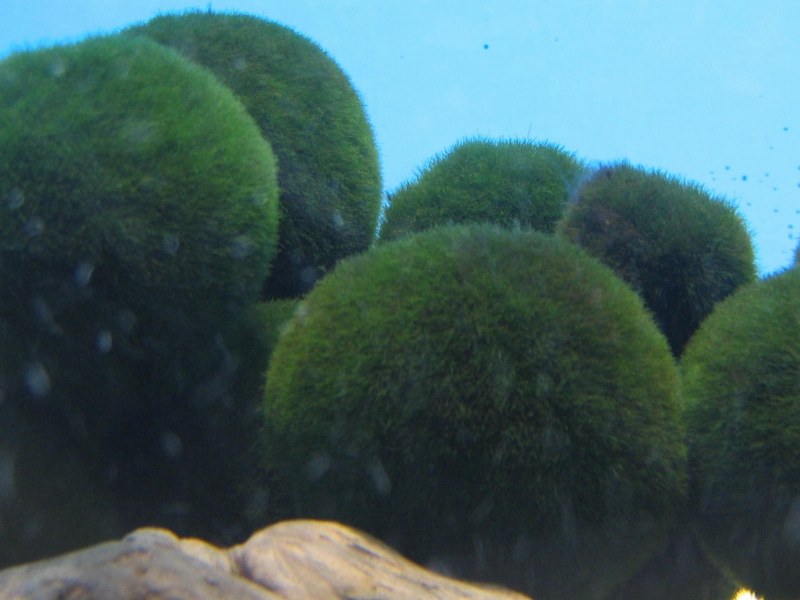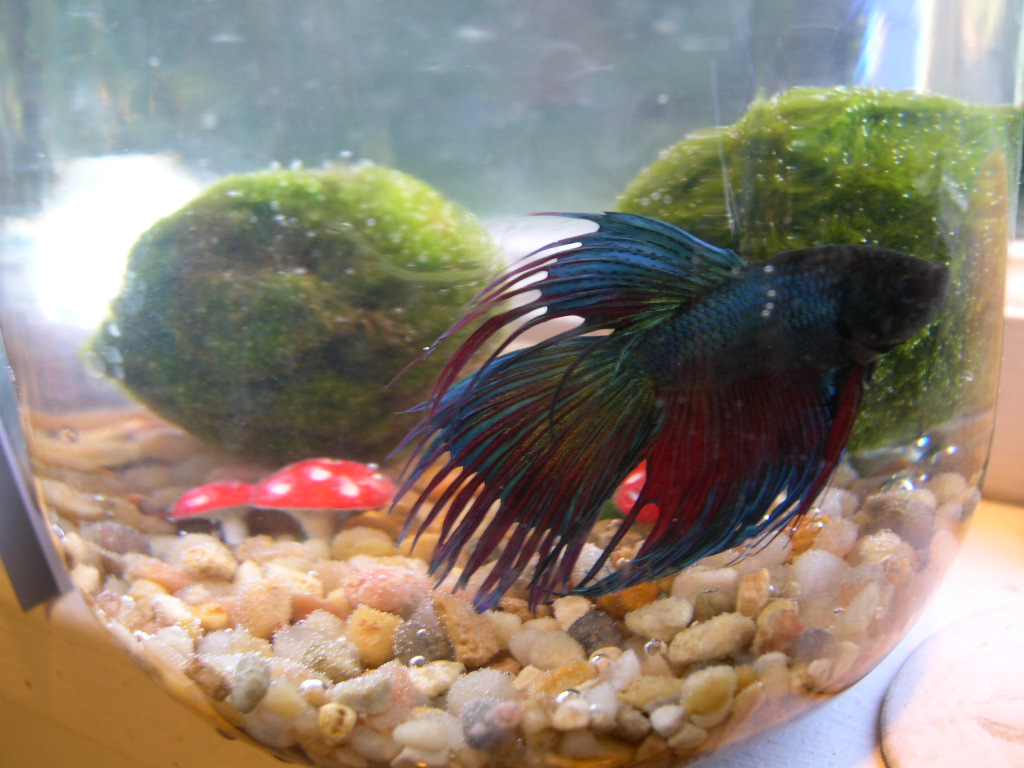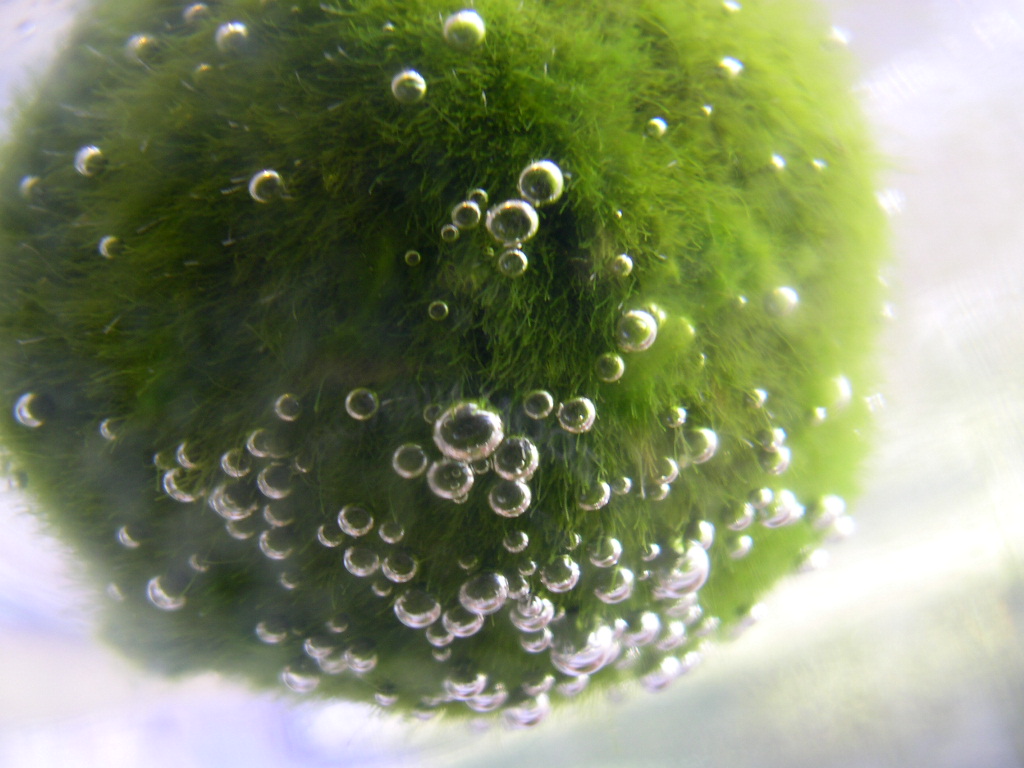We sing the praises of indoor plants on a regular basis, because there’s so much to love and so many benefits. But it’s true not all indoor plants are suitable for every environment. You may have an especially challenging environment with low light, variations in temperature, even limits to where you can put them. Or maybe you admit you aren’t the most diligent about even the simplest plant care.
Sometimes the problem is the limitations to the indoor plants available for your conditions. There are a few bulletproof plants so common, I understand if you’re a little bored by them.
Well, no more excuses. I have the perfect indoor plant for you. It’s the desktop version of our popular moss walls, the hottest trend in the Plantscaping business right now. It’s Marimo – Japanese moss balls!

Marimo are native to Japan, Iceland, and Austria where they grow in deep, cold lakes. Photo: Wikimedia
It’s not hard to figure out why moss walls are popular. They’re beautiful, easy care, and can go nearly anywhere. They work in low light situations where traditional living walls or even indoor plants would struggle.
Marimo, or moss balls, share the same qualities. Marimo balls are rare, round shaped, noninvasive algae. They are a beautiful deep green color and have a velvety appearance. This might be where “Star Trek” got the idea for Tribbles. They are native to one lake in Japan, Lake Akan, and they also live in parts of Europe and Iceland.
Marimo are considered an endangered species in nature. But domesticated, commercially grown Marimo balls are easy to buy and the ideal plant for beginners, plant abusers (you know who you are), or someone looking for an unusual indoor plant.
Wild Marimo balls grow in very cold, dark water where gentle waves roll them around slowly to expose all sides to light. Indoors, Marimo can grow in nearly anything that will hold clean, cold water, 75 degrees or less. Every one or two weeks, you change the water. Tap water is fine. Put your container in indirect sun or low artificial light. Direct sunlight can burn and kill Marimo. This and heat are their main enemies.
Your container can be covered, or uncovered. A cover will help keep Marimo clean, though.
Marimo can live with all kinds of fresh water aquarium fish or creatures like snails. A favorite Marimo roommate is a Beta fish. They don’t need any food or fertilizers. They create their own through photosynthesis. They grow slowly. Mature Marimo in a container might reach five to six inches in diameter. When they are soaked they rest on the bottom of the container, but otherwise they can float up to the water surface.
If your Marimo gets too big for your container, you can divide them. They may also grow small babies you can detach, and you’ll have a whole Marimo family. In the right conditions, Marimo can live many years. In Japan, prized Marimo are passed down through many generations as a keepsake.

Marimo co-exist nicely in aquariums with fish and mollusks. Beta fish are a good choice. Photo: Sarah Ivy/Flckr-Creative Commons
Japan celebrates the Marimo Matsuri Festival every October. It was started in 1950 as part of a campaign to protect the endangered wild Marimo. It is led by the native Ainu people of Japan. There is also an extensive Marimo Exhibition and Observation Center at Lake Akan, where research is conducted on the protection and cultivation of Marimo.
Marimo are considered a good luck charm for love and prosperity. Many people incorporate them into the Feng Shui of their homes or workplaces. All you have to do is give them basic care and enjoy them. They’re a perfect summer project for kids, too. Just be sure they don’t get left in the sun, and don’t ‘come out to play’ with energetic kids. They aren’t a Nerf ball.
Believe it or not, there are fake Marimo out there because the demand has outpaced the supply. The replicas might look like the real thing, but they are often some other species of algae, or Java Moss.
You can buy Marimo online, but be sure you’re buying from a reputable source. When you put Marimo in your water for the first time, a real one should float for a while before eventually sinking to the bottom. It won’t float again unless you squeeze the water out like a sponge. They grow very slowly, and they can’t tolerate heat or strong light. They are solid algae right to the core – not only on the surface. We recommend the website MossBalls.com, and there are some good sources on Amazon.

We have experimented growing Marimo at Good Earth Plants with mixed results. Photo: Sarah Ivy/Flickr Creative Commons
We’ve played around with Marimo at Good Earth Plant Company. We always put products new to us “on trial” before we advise people about them so we can speak from our personal experience. We don’t always get the greatest results.
We considered giving out Marimo moss balls as Earth Day gifts to our clients. But we found people need to really stay on top of care. It might be easy enough, but if you don’t change the water regularly in a closed container of Marimo, the water gets stinky pretty fast. Uncovered, the water even got dirty fast. So be sure you’re changing the water out regularly and don’t let the water get warm.
For us, they did best when we put them in our aquariums. The fish may eventually eat them – but they did grow and looked cool for a fairly long time.
If you can’t get enough moss in your life, Good Earth Plant Company can create a custom moss wall for nearly any space. Give us a call!

